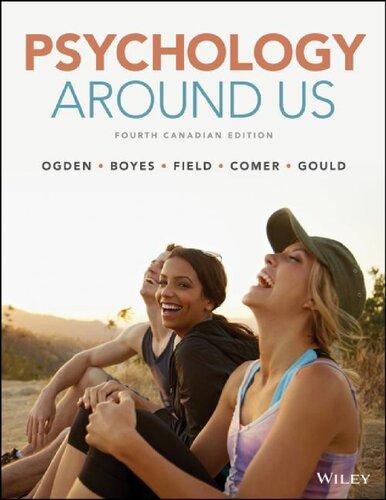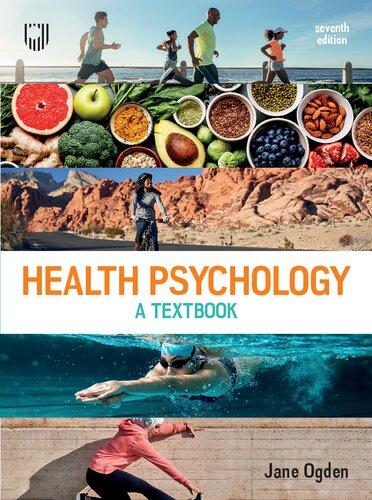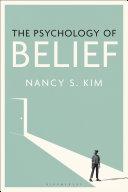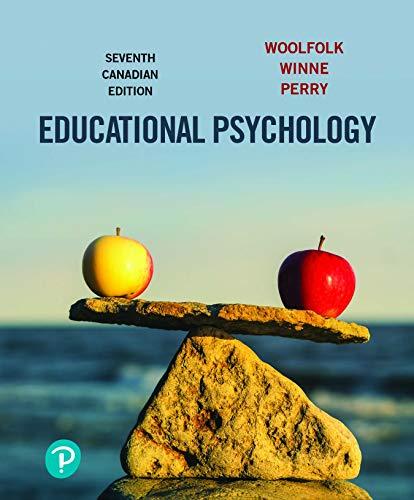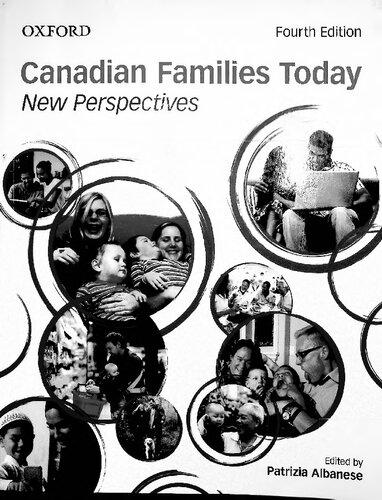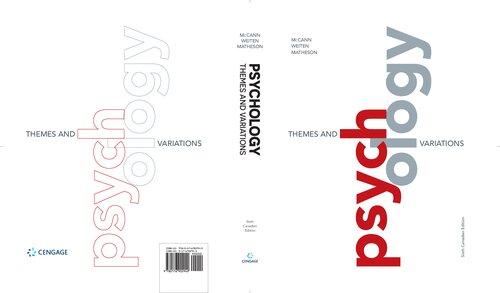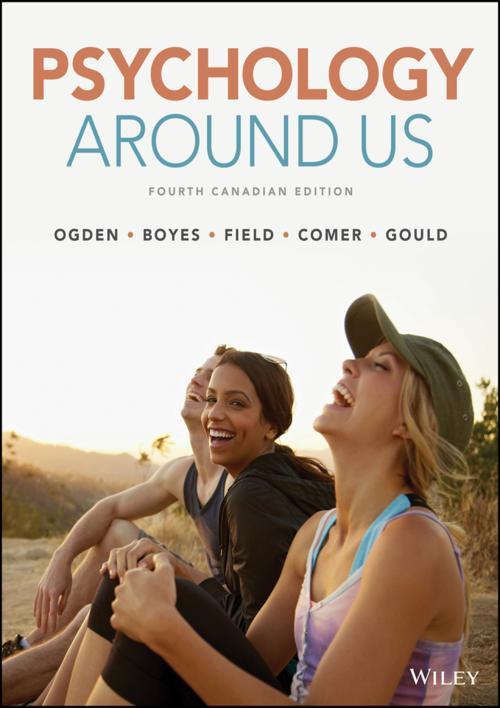Psychology Around Us, Canadian Edition
1. Cover
2. Contents
3. Title Page
4. Copyright
5. About the Authors
6. To the Instructor
7 Acknowledgements
8. Chapter 1: Psychology: Yesterday and Today
1. What Is Psychology?
2. Psychology’s Roots in Philosophy
3. The Early Days of Psychology
4. Twentieth-Century Approaches
5. Psychology Today
6 Chapter 1 Summary
7. Chapter 1 Key Terms
8. Chapter 1 Self-Study Questions
9. Chapter 2: Psychology as a Science
1. What Is a Science?
2 Is Psychology a Science?
3. How Do Psychologists Conduct Research?
4 How Do Psychologists Make Sense of Research Results?
5. What Ethical Research Guidelines Do Psychologists Follow?
6. Chapter 2 Summary
7. Chapter 2 Key Terms
8. Chapter 2 Self-Study Questions
10 Chapter 3: Neuroscience
1. How Do Scientists Study the Nervous System?
2 How Is the Nervous System Organized?
3. Structures of the Brain
4. How Does the Nervous System Work?
5. How Do Neurons Work?
6. CNS Injury and Brain Lateralization
7 Evolution and the Nervous System
8. Chapter 3 Summary
9. Chapter 3 Key Terms
10. Chapter 3 Self-Study Questions
11. Chapter 4: Human Development
1. How Is Developmental Psychology Studied?
2. Understanding How We Develop
3 Heredity and Prenatal Development
4. Infancy and Childhood
5. Adolescence
6. Adulthood
7. Chapter 4 Summary
8. Chapter 4 Key Terms
9. Chapter 4 Self-Study Questions
12. Chapter 5: Sensation and Perception
1. Common Features of Sensation and Perception
2 The Chemical Senses: Smell and Taste
3. The Tactile or Cutaneous Senses: Touch, Pressure, Pain, Vibration
4. The Auditory Sense: Hearing
5. The Visual Sense: Sight
6. Chapter 5 Summary
7 Chapter 5 Key Terms
8. Chapter 5 Self-Study Questions
13 Chapter 6: Consciousness
1. When We Are Awake: Conscious Awareness
2. When We Are Awake: Preconscious and Unconscious States
3. When We Are Asleep
4. Altered States of Consciousness: Hypnosis
5 Altered States of Consciousness: Psychoactive Drugs
6. Chapter 6 Summary
7 Chapter 6 Key Terms
8. Chapter 6 Self-Study Questions
14. Chapter 7: Learning
1. What Is Learning?
2. Classical Conditioning
3 Operant Conditioning
4. Observational Learning
5. Learning and Cognition
6. Factors that Facilitate Learning
7. Prenatal and Postnatal Learning
8. Specific Learning Disorder
9. Chapter 7 Summary
10 Chapter 7 Key Terms
11. Chapter 7 Self-Study Questions
15. Chapter 8: Memory
1. What Is Memory?
2. How Do We Encode Information into Memory?
3. How Do We Store Memories?
4. How Do We Retrieve Memories?
5 Why Do We Forget and Misremember?
6. Memory and the Brain
7. Memories in the Young and Old
8. Disorders of Memory
9. Chapter 8 Summary
10 Chapter 8 Key Terms
11. Chapter 8 Self-Study Questions
16 Chapter 9: Language and Thought
1. Language
2. The Relationship Between Language and Thought
3. Thought
4. Chapter 9 Summary
5. Chapter 9 Key Terms
6 Chapter 9 Self-Study Questions
17. Chapter 10: Intelligence
1. What Do We Mean by Intelligence?
2. How Do We Measure Intelligence?
3. Additional Types of Intelligence
4 How Is Intelligence Influenced by Biological and Environmental Factors?
5. The Brain and Intelligence
6 Extremes in Intelligence
7. Chapter 10 Summary
8. Chapter 10 Key Terms
9. Chapter 10 Self-Study Questions
18. Chapter 11: Motivation and Emotion
1 Theories of Motivation
2. Biological Motivations: Thirst and Hunger
3 Biological Motivations: Mate Choice and Sex
4. Psychological Motivations: Individual Factors
5. Psychological Motivations: Affiliation and Achievement
6. What Are Emotions?
7. Theories of Emotion
8 What About Positive Emotions?
9. Chapter 11 Summary
10. Chapter 11 Key Terms
11. Chapter 11 Self-Study Questions
19. Chapter 12: Personality
1. The Psychodynamic Perspective
2. The Humanistic Perspective
3 The Trait Perspective
4. Personality Assessment
5. The Situationist and Interactionist Perspectives
6. Biological Foundations of Personality
7. Differences in Personality
8. Personality Disorders
9. Chapter 12 Summary
10 Chapter 12 Key Terms
11. Chapter 12 Self-Study Questions
20. Chapter 13: Social Psychology
1. Social Cognition: Attitudes
2. Social Cognition: Attributions
3 Social Forces
4. Social Relations
5 Social Functioning
6. Chapter 13 Summary
7. Chapter 13 Key Terms
8. Chapter 13 Self-Study Questions
21. Chapter 14: Stress, Coping, and Health
1. What Is Stress?
2 Responding to Stress
3. Coping with Stress
4. Stress and Health
5. Posttraumatic Stress Disorder
6. Chapter 14 Summary
7 Chapter 14 Key Terms
8. Chapter 14 Self-Study Questions
22 Chapter 15: Psychological Disorders
1. Defining, Classifying, and Diagnosing Psychological Abnormality
2. Models of Abnormality
3. Mood Disorders
4. Anxiety Disorders
5 Schizophrenia
6. Other Disorders
7 Chapter 15 Summary
8. Chapter 15 Key Terms
9. Chapter 15 Self-Study Questions
23. Chapter 16: Treatment of Psychological Disorders
1. Treatment in Today’s World
2 Biological Treatments
3. Psychodynamic Therapies
4. Behavioural Therapies
5. Cognitive-Behavioural Therapies
6. Humanistic and Existential Therapies
7. Formats of Therapy
8. Does Therapy Work?
9 Some Final Thoughts About the Field of Psychology
10. Chapter 16 Summary
11. Chapter 16 Key Terms
12. Chapter 16 Self-Study Questions
24. Appendix A Answers to Self-Study Questions
25. Appendix B Statistics in Psychology
1. Descriptive Statistics
2 Inferential Statistics
3. Why Statistics Matter
26. Glossary
27. References
28. Name Index
29 Subject Index
30. End User License Agreement
About the Authors
NANCYOGDENisafullprofessoratMountRoyalUniversityintheDepartmentof Psychologywhereshehastaughtforthepast30years,andwhereshecurrentlyactsas ChairofthedepartmentShehaspreviouslypublishedanotherCanadianintroductory psychologytextbook.OgdenhastwicereceivedtheTeachingExcellenceAwardatMount RoyalUniversity.Sheworksandpublishesintheareasofpoverty,socialandemotional developmentinchildrenandadolescentsandtheirfamilies,homelessyouth,physical literacyinearlychildhood,andindatamanagementfornon-profitagenciesserving children,youth,andfamiliesShealsodoesresearchpertainingtothedevelopmentofstudy strategyinformationinundergraduates.
MICHAELBOYEShastaughtattheUniversityofCalgaryintheDepartmentofPsychology for35yearsandhasreceivedtheUniversityofCalgaryStudentUnionTeachingAwardHe publishes,consults,andrunscoursesandworkshopsintheareasofcognitiveand psychosocialdevelopmentandidentityinfamilies,children,adolescents,andemerging adults,aswellasinprogramsaimedatoptimizingstudentexperiencesintransitionsto theirpost-secondarydevelopmentalpathwaysandwithadultswhoneedtoengagein midlifecareerandidentitypivotsHeassistswiththedevelopmentandtellingthestories (evaluation)ofprogramsbyandforurbanIndigenouschildren,youth,andfamiliesand programsdealingwithdomesticviolenceHehasalsoservedasanexpertwitnessincases relatedtomattersofadolescentconsent.
EVELYNFIELDisafullprofessoratMountRoyalUniversityintheDepartmentof Psychology,whereshehastaughtforover12years.Shehaspublishednumerousscientific articlesandco-authoredthreebooks: Sex Differences: Summarizing More than a Century of Scientific Research,theCanadianeditionof Sexuality Now: Embracing Diversity, and Psychology YOU,acareerguideforpsychologyundergraduatesFieldisacontributing authortoseveralothertextbooks,including Biology on the Cutting Edge: Concepts, Issues and Canadian Research around the Globe andpreviouseditionsof Psychology Around Us She hasreceivedawardsfromtheNaturalSciencesandEngineeringResearchCouncilof Canada(NSERC),theAlbertaFoundationforMedicalResearch,andtheCanadianInstitutes ofHealthResearch,andisarecipientoftheGovernorGeneral’sGoldAcademicMedal.She completedherstudiesinneuroscienceattheUniversitiesofLethbridgeandCalgary,and theMarineBiologicalLaboratoriesinWoodsHole,MassachusettsFieldhasbeen nominatedfor,andreceived,severalawardsforteachingexcellence,includingarecent DistinguishedFacultyAwardfordistinctioninteaching,scholarship,andserviceatMount RoyalUniversity.Herresearchfocusisintheareasofneuroscience,sexuality,andthe scholarshipofteachingandlearning,whereshefocusesonintegratingcreativityand technologyintotheclassroom.
RONALDCOMERhastaughtinPrincetonUniversity’sDepartmentofPsychologyformore than35yearsandhasservedasDirectorofClinicalPsychologyStudiesformostofthat timeHehasreceivedthePresident’sAwardforDistinguishedTeachingattheuniversity Comeralsoistheauthorofthetextbooks Abnormal Psychology,nowinitsseventhedition, and Fundamentals of Abnormal Psychology,nowinitsninthedition,andisthecoauthorof
Case Studies in Abnormal Psychology.Heistheproducerofvariouseducationalvideos, includingTheIntroductiontoPsychologyVideoLibrarySeriesInaddition,hehas publishedjournalarticlesinclinicalpsychology,personality,socialpsychology,andfamily medicine.
ELIZABETHGOULDhastaughtinPrincetonUniversity’sDepartmentofPsychologyforthe past15years.Aleadingresearcherinthestudyofadultneurogenesis,shehaspublished numerousjournalarticlesontheproductionofnewneuronsintheadultmammalianbrain. Gouldhasbeenhonouredforherbreakthroughworkwithanumberofawards,including the2006NARSADDistinguishedInvestigatorAwardandthe2009RoyalSocietyoftheArts BenjaminFranklinMedal.Sheservesontheeditorialboardsof The Journal of Neuroscience, Neurobiology of Learning and Memory, Biological Psychology,and Cell Stem Cell.
To the Instructor
Psychologyisallaroundus.Ifevertherewassubjectmatterthatpermeatesoureveryday lives,itispsychology.Behaviouroccurseverywhere,andmentalprocessesaffectallthat wedo;therefore,thestudyofindividualbehaviourandmentalprocessescanhelpshed lightonawiderangeofeventsandissues.
PsychologyAroundUs,FourthCanadianEdition,helpsopenstudents’mindstothe notionthatpsychologyisindeedaroundthemeverydayandthatitsprinciplesare immediatelyapplicabletoawholehostoflife’squestions.Italsofeaturesclassroom-proven pedagogytokeepstudentsengagedandhelpthemmasterthematerial.
Wearecommittedtodemonstratingforstudentstherelevanceandinterconnectednessof allareasofpsychologyWeaimtoencouragestudentstoexaminenotonlywhattheyknow abouthumanbehaviourbuthowtheyknowit,andseektoopenstudentsuptoan appreciationofhowpsychologypervadestheworldaroundthemandhowitcanassist theminseeing,understanding,andoptimizingtheirexperienceswithintheworld.
About the Text
Ourcontentisuniqueinthatwhileeachtopicisstillcoveredinitsownchapter,the integratednatureofpsychologypermeateseverychapter.Forexample,howcanstudents getafullappreciationofmemorywithoutdiscussingthevitalroleofthehippocampus,or howmemorydevelops,orhowAlzheimer’sdiseasechangesmemoryfunction?Psychology AroundUs,FourthCanadianEditionisatrulyintegratedproduct—onethatbringsallof theseelementstogetherintoone,completediscussionofanygiventopicofpsychology
Thisintegrationisaccomplishedbyofferingathorough,currentpresentationofthe conceptwithexplanations,applications,andresearch(includingkeyCanadianresearch)of eachtopic,butalsoincludessectionsonneuroscience,development,anddysfunctionsthat illustratehoweachofthesekeyareasistiedtootherareasofpsychology.Thesesections servetopresentpsychologyasaunitedandintegrateddiscipline,thereforeshowing students“thebigpicture”
New to this Edition
OurgoalforthefourthCanadianeditionofPsychologyAroundUswastocontinuetomake itasengagingaspossibleforstudentsandassupportiveaspossibleforinstructors.We askedreviewerstoprovideuswithconstructiveinputintermsofthestrongsciencebaseof thecoverage,theirownconcernsregardingkeytopicsforinclusion,andwhattheir studentsfoundengagingaboutthematerial whattheywantedtoknow,whatquestions theyasked,andwhatseemedtomostpiquetheirinterest.Wehaveincorporatedmostof thesuggestionsmadebyreviewersinthisedition
Currency Changes
Weupdatedandaddedhundredsofcurrent,relevantreferencestoensurethatreadersare providedwithaccesstothemostup-to-dateresearchrelatedtothetopicscoveredandto maketheresearchfoundationsofthetheories,concepts,andfindingsdiscussedcurrent andclear.Thetextalsofeaturesanupdatedandinclusivegraphicsandphotoprogram.
Topical and Organization Changes
Chapter 1 – Psychology: Yesterday and Today
IndigenizationwasintroducedinanintroductoryfeatureboxtyinginwiththeTruth andReconciliationCommission’s94callstoaction.
The“RootsinPsychology”sectionwasrewrittentomakeitmorestudentfriendlyand accessible
Informationwasaddedonindustrial/organizationalpsychology,aswellascognitive neuroscienceandappliedareasofpsychologysuchassportspsychology.
Chapter 2 – Psychology as a Science
Thesectiondiscussingeugenicswasre-writtentoprovideaclearerhistoricalcontext andasharpertie-infortheCanadiancontentonthattopic.
Theintroductiontotherecurringcontentthreadinthechapterontherelationship betweenviolentvideogameplayandaggressivebehaviourwasreworkedtoinclude citationstoandfindingsarisingfromtworecentlargemeta-analyseslookingatthis question.
Chapter 3 – Neuroscience
Thechapterwasreorganized,startingwiththebigpictureofhowthenervoussystem isorganizedandworkingdowntothedetailsofhowneuronscommunicatewithone another
Thediscussionofourcurrentknowledgeregardingtreatmentofspinalcordinjuries wasupdated.
Thediscussionoftheactionpotentialandsynaptictransmissionwasexpanded,with newfiguresanddiagramstoclarifyhowitworksandtobettersupportstudents’ understandingoftheconcept.
Thelearningobjectivethatfocusesonacquiredcentralnervoussysteminjuryand lateralizationofbrainfunctionwasrevisedandupdated.
Chapter 4 – Human Development
Thediscussiononcohort-sequentialdesignswasexpanded,includingbettervisual imagery.
Somefeatureboxestookamoreappliedfocus: Psychology Around Us boxesdealwith theroleoffathersinchilddevelopment(featuringCanadiandataaswellasacase reportonanIndigenousfather)aswellbullyinginschoolsandtheworkplace; Indigenous Experiences boxesaddresstheroleofresidentialschoolsinbreaking
familialbondsanddisruptingidentitydevelopment.
Otherboxestookamoreprogrammaticfocusondevelopment,with Positive Psychology boxesfeaturingAboriginalHeadStartPrograms,theAlbertaFamily WellnessInitiative,andthe Practically Speaking boxfocusingonhowaccesstoquality childcareinCanadavariesbysocio-economicstatus.
Chapter 5 – Sensation and Perception
Informationonthresholdswasexpandedandinformationwasaddedonsignal detection.
Thetextwaseditedtoclarifyconceptsandincreasestudentunderstanding.
Featureboxeswereaddedoncurrenttopicsofinteresttostudents,suchaCOVID-19, managingchronicpain,andthroatsinging.
Chapter 6 – Consciousness
Thediscussionofcontemporarydefinitionsofconsciousness,includingstatesof consciousness,wasexpanded.
Thesleepdisordersectionwasexpandedtoincludedisordersaslistedinthe InternationalClassificationofSleepDisorders,includingexcessivedaytimesleepiness, andanewsectionwasaddedoncircadianrhythmsleepdisorders,whichoftenaffect youngpeople.
Thesectiononpsychedelicswasupdatedandexpandedtoincludedrugscommonly foundinthiscategory,suchaspsilocybin,ketamine,andDMT.
Chapter 7 – Learning
Topicswerestreamlinedorexpandedtoenhancestudentunderstanding.
Featureboxeswereaddedontheroleoflearninginaspectsofday-to-daylife, includingtheroleofpunishmentindiscipliningchildren,academicsuccess,andhow fearinfluenceslearning.Otherboxesfocusontheroleoflearningtherapeutically,such asusingrobotstoteachautisticchildrenaboutemotions,theroleofhabituationin neuropsychiatricdisorders,aswellaspredictingself-harmbehavioursthrough negativereinforcement.
Chapter 8 – Memory
Informationonflashbulbmemorieswasupdatedandexpanded
Thediscussionondementiawasexpandedandtwofeatureboxesonthetopicsof memorylossandonslowingcognitivedeclineinolderadultswereaddedtosupport thisexpansion
Apresentationofpracticalstudytechniques,includingthePQRSTstudymethod,was modified.
Adiscussiononcannabisandmemorylosswasadded.
Featureboxeswereaddedthataddressastoryofamistakeneyewitnessaccountanda
manwrongfullyaccusedandjailed,anaccountofhighlysuperiororseverelydeficient autobiographicalmemories,andtheimpactoforalhistoryinIndigenouscultures
Chapter 9 – Language and Thought
ThesectionrelatingtoKokothegorillawasreworkedgivenherdeath.
Whereappropriate,materialrelatingtoCOVID-19anditsimpactupon communicationswasadded(eg,interpretationofsocialdistanceinconversation)
Materialwasaddedintotheendofthetheoriesoflanguagedevelopmentsection discussingRoy’sworkofchild-directedspeechand“wordbirths”studiedthroughthe HumanSpeechomeProject.
Newinformationontheneuroscienceofmarketingwasaddedtothesectiononthe languageandthebrain.
Theleapinresearchonautopilotprogramsforautomobileswasaddedtothe Psychology Around Us feature.
Chapter 10 – Intelligence
Theinformationonbrainfunctionandintelligencewasexpandedtoincludea discussionofhowbrainactivitycorrelatestomeasuresofintelligence.
Chapter 11 – Motivation and Emotion
Thirstandbingeeatingdisorderwereaddedtothefirstoftwolearningobjectives focusedonbiologicalmotivations.
Thesecondlearningobjectiveonbiologicalmotivationswasrenamed“MateChoice andSex”Informationonmatechoicewasaddedandthissectionwasupdatedto reflectcurrentperspectivesandresearchinpsychology.
Anewsectionontheindividualfactorsofpsychologicalmotivationswasadded, discussinghowunconscious/conscious,approach/avoidance,intrinsic/extrinsic,and fixed/growthmindsets asaspectsofwhoweareasindividuals affectmotivation.
Thediscussionofmotivationandthebrainwasexpanded,withseveralnew photographsanddiagramsaddedthroughoutthechapter.
Chapter 12 – Personality
SectionsontheTraitApproachandtheTrait-BasedApproachtoAssessmentwere reorganizedandre-writtentobetterreflectthehistoricalemergenceofthiscentral partofthedisciplineofpersonalitypsychologyAsaresult,thediscussionnowfollows themoresensible,integratedlineoftrackingtheemergenceofthetraitapproach throughtheworkdoneonthedevelopmentofassessmentandthebuildingof empiricallysupportedinventories.
TheclosingsectiononPersonalityDisorderswasreworkedtoprovideaclearfocuson recentworkonadimensionalapproachtopersonalitydisorders,muchmoreinline withhowpersonalityisconsideredwithinpsychology.
Chapter 13 – Social Psychology
TheimpactoftheCOVID-19pandemiconstress,anxiety,anduncertaintyespecially thoughitsimpactofnormsforsocialengagementandbehaviourwasdiscussed
Contentwasaddedtoensurethatreactionstoincidentsofpoliceviolencetoward blackandIndigenouspeoplewasappropriatelylinkedtosocialpsychologytheoryand researchonstereotypes,prejudice,andbystanderintervention.Thewaysthatworkin socialpsychologylinksintoconcernsandissuesofsystemicracism,particularlyin relationtoCanada’sIndigenouspeople,arenotedanddiscussed.
Chapter 14 – Stress, Coping, and Health
MeditationwasaddedtoLearningObjective3
Newfeatureboxeshaveexpandedthematerialonhealthandstressincluding referencetostressduringthetimeofCOVID-19.
Chapter 15 – Psychological Disorders
MaterialwasaddedtotheAnxietyDisordersectionrelatedtosignificantanxietyrelatedissuesarisingfromtheCOVID-19situation.
StatisticsonCanadianIndigenoussuiciderateswereupdated.
MaterialwasaddedintheDepressionsectiononsocialprescribingpractisedinthe UnitedKingdomwherelonelypeopleareprescribedparticipationingardeningclubs, etc.athealthsystemexpense.
TheopeningpartofthesectiononPersonalityDisorderswasreworkedtobetterlinkit withworkdoneinChapter12(Personality)alsoonpersonalitydisorders.Material wasaddedinChapter15toclarifytheoutcomesoftheintensediscussionsthat occurredwithintheAmericanPsychiatricAssociationDSMcommitteeonpersonality disordersoverwhetherpersonalitydisordersshouldbeconsideredcategoricallyasin previousDSMeditionsorasextremesonanarrayofpersonalitydimensions.Wefeel thatthewaythisinformationisnowpresentedinthiseditioneditionclarifiesthe relationshipbetween“normal”personalitytheoriesandpersonalitydisorders.
Chapter 16 – Treatment of Psychological Disorders
Drugandtreatmentstatisticsandresearchsupportwereupdated
Long-termandshort-termapproachestopsychodynamictherapieswereexpanded andclarified.
Anintroductiontoandin-depthdiscussionofthird-wavecognitivebehavioural approacheswasadded.
Thesectiononefficacyinpsychotherapywasexpanded.
Afeatureboxwasaddedprovidingpracticalsupportforstudentswithadviceon selectingatherapist.
Newfeatureswereaddedwithastrongfocusoninclusion,withboxesonwell-beingin culturallydiversestudents,findingcomprehensivecommunitycareforextremely
vulnerableindividuals,effectiveprogramsforIndigenouspeople,involvingEldersin mentalhealthcareforIndigenouspatients,andeffectivetreatmentoptionsforthose diagnosedwithborderlinepersonalitydisorder.
New Pedagogical Features
Indigenous Experiences
Education,includingpost-secondaryeducation,wasgivenacentralroleintheTruthand ReconciliationCommission(TRC)ofCanada’s94callstoaction.TheTRCwastaskedwith documentingtheexperiencesofsurvivors,familiesandcommunitiesaffectedbyIndian ResidentialSchools(IRS).ThemandateoftheTRCwastofindoutthetruthaboutwhat happenedinresidentialschoolsandtoinformallCanadiansaboutwhattranspiredinthese schoolsandleadthecountrytowardreconciliationandhealing.
TheIndigenousExperiencesfeature,oneineachofthefirstthreechaptersandtwointhe restofthechapters,addressesIndigenousperspectivesasrecordedinTRCreportsor presentedinresearchthatisrelevanttoIndigenouspeopleinconnectionwithoneormore relatedtopicsineachchapter.
Positive Psychology
TwoofthePsychologyAroundUsfeaturesineachchapter(withtheexceptionofChapter 1)highlightresearchbasedonpositivepsychologicalperspectives.Eachisfocusedonthe applicationofhumanstrengthsandpositiveprinciplesratherthanonthereparationof negativelifeimpacts.
Psychology@Work
Avideoseriesintheonlinecoursewareandmarginnoteslinkthebasicconceptspresented inanintroductorypsychologycoursetoindustrial/organizationalpsychologyworkplace andorganizationalapplicationsandhelpsstudentsunderstandhowwhattheylearnrelates totheirfuturelivesandcareers.
Continuing Features
Your Brain and Behaviour
Inrecentyearsneurosciencehasbeentiedtovirtuallyeverysubfieldofpsychology Remarkablebrainimagingstudies,inconjunctionwithanimalstudies,havehelpedusto identifytheneuralmechanismsofeverydayexperienceAccordingly,PsychologyAround Us,FourthCanadianEdition,incorporatesneuroscienceinformationintochapterswhere ithastraditionallybeenabsent,suchassocialpsychologyandconsciousness.
Inaddition,thiseditionoffersakeyteachingfeature YourBrainandBehaviour withthe exceptionofChapters1and2,thisfeaturehasbeenincorporatedintoeachchapter.Your BrainandBehavioursegmentsfocusonhowthebraindeterminesourbehavioursina varietyofscenarios,suchaspublicspeaking,eatingpizza,ourreactionstoroboticfigures,
andpsychopathy.Thissectionwillhelpstudentsunderstandtheimportanceofthe interactionofourbrain’scontrolofourbehaviourswiththeenvironmentswelivewithin Thesefeatures,whichincludeneuroimagesandfindingsfrombothhumanstudiesand relevantanimalexperiments,drawstudentsintothebrainandprovidethemwithup-todateinformationabouttheneuralmechanismsatworkduringtheireverydayexperiences Eachfeatureincludesquestionsthatallowstudentstotesttheirknowledge.Regardlessof theirbackgroundinneuroscience,studentscomeawayintriguedbymaterialthathas traditionallybeenconsidereddifficult.
Chapter Opener Outline
Everychapterbeginswithanoutlineofthemainheadingsinthechapter,withthe accompanyinglearningobjective.Eachchapteralsostartswithadescriptionabouta personorsituationtointroduceconceptsandintereststudentsinthechaptercontent.This introductorymaterialhelpstogivereadersanoverviewofthechapterandhelpstoprepare themforthematerialtheywillneedtolearn.
Guided Learning
ALearningObjectiveforeachchaptersectionidentifiesthemostimportantmaterialfor studentstounderstandwhilereadingthatsection.
FollowingeachsectionisaBeforeYouGoOnfeaturewithquestionsthathelpstudents checktheirmasteryoftheimportantitemscovered WhatDoYouKnow?questions promptstudentstostopandreviewthekeyconceptsjustpresented.WhatDoYouThink? questionsencouragestudentstothinkcriticallyonkeyquestionsinthechapter.Answers toBeforeYouGoOnquestionsareprovidedintheonlinecourseware.
Special Topics on Psychology In Our Daily Lives
Eachchapterhighlightsinterestingnewsstories,currentcontroversiesinandaround psychology,andrelevantresearchfindingsthatdemonstratepsychologyaroundus.
ThePsychologyAroundUsboxeshighlighthowpsychologyaffectsusinour everydaylives,ineveryway,withexamplesfromCanadaandaroundtheworld.
ThePracticallySpeakingboxesemphasizethepracticalapplicationofeveryday psychology
Thorough Coverage
PsychologyAroundUs,FourthCanadianEdition,contains16chaptersthatcoverkey topicsofpsychologyindepthInsteadofcombiningchaptersonstressandemotion,or psychologicaldisordersandtheirtreatment,eachtopicisgivenfullcoverageinitsown, separatechapterThisgivesyouultimateflexibilityindetermininghowmuchtimeyou wantyourstudentstodevotetoeachtopic.Forexample,ifyouwanttocoverneuroscience briefly,thensimplyassigntherelevantpagesfromthatchapter;butifyouwanttocover neuroscienceindepth,youhaveafullchapteratyourdisposalthatcontainsdetailedand integratedcoverageofthetopic.
Chapter Summary
Theend-of-chaptersummaryreviewsthemainconceptspresentedinthechapterwith referencetothespecificLearningObjectivesItprovidesstudentswithanotheropportunity toreviewwhattheyhavelearnedaswellastoseehowthekeytopicswithinthechapterfit together.End-of-chapterSelf-StudyQuestionshavebeenadded,withanswersprovided,to helpstudentsdoaquickcheckoftheirunderstandingofkeyconceptscovered.
Student Resources
StudentswillfindsupportmaterialsinWiley’sonlinecoursewarethatwillhelpthem developtheirconceptualunderstandingofcoursematerial.Someoftheresourcesavailable forstudentsincludethee-textbook,videos,animationsandinteractives,andmultiple practiceopportunitiesusingmultiplechoiceandtrue-falsequestions.
E-Textbook Characteristics
E-Textbooksarecompletedigitalversionsofthetextthathelpstudentsstudymore efficientlyasthey:
Accesscontentonlineandofflineontheirdesktop,laptop,andmobiledevice
Searchacrosstheentirebookcontent
Takenotesandhighlight
Copyandpasteorprintkeysections
Createapersonalizedstudyplan
Shareinsightsandquestionswithpeers
Videos
ThenewPsychology@Workvideoserieslinksthebasicconceptsofanintroductory psychologycoursetoresearchandpracticeinindustrial/organizational(IO)psychology.In recentyears,therehasbeenconsiderableinterestinincreasingthecoveragein introductorypsychologytextbooksandcoursesofthebroadarrayofworkdonebyIO psychologistsMainly,thishasbeendrivenbymembersoftheSocietyforIndustrialand OrganizationalPsychology(SIOP)whoworkinIOprogramswithinpsychology departmentsacrossCanadawantingtoengagestudentsanddriveinterestintheir undergraduateandgraduatecourses.Thereareveryrealbenefitsofearly,qualityexposure toIOpsychologytopsychologymajorsaswellastothemajorityofintroductorypsychology studentswhoarenotpsychologymajors.Forexample,marketsurveyresearchshowsthat theaveragestartingsalariesofmaster’slevelpreparedIOstudentsincorporateorIO consultingworkishigherthantheaveragestartingsalariesforPhD-levelclinical psychologists(Rajecki,2012).
Inaddition,allstudentswhoheadoutintothegeneraljobmarketaftercompletingtheir undergraduatestudieswillexperiencealotofappliedIOpsychologyasitinformshiring practicesanddecisionmaking,personnelselection,training,andretention.Thenew Psychology@WorkvideoseriesfeaturestherangeofwaysthatIOpsychologyimpacts
psychologyandtheworldaroundus.Oneortwovideoswithchapter-relevantIOcontent arelinkedintoallbutchapters6and8withcalloutnotesandmarginalcaptions. Consideredtogether,thevideoscoveralmostallcoreareasofresearchactivityandpractice ofIOpsychologistsasdetailedbySIOP.Associatedquestionsprovideopportunitiesfor studentstoreinforcewhattheyhavelearned
Instructor Resources
TheInstructor’sManualpresentsteachingsuggestionsforeachchapterandincludes ideasforlectureclassroomdiscussions,demonstrations,andvideos
EverychaptercontainsaPowerPointPresentationwithacombinationofkeyconcepts, figuresandtables,andproblemsandexamplesfromthetextbook.Theinstructor’sversion alsoincludesnotesforadditionaldiscussionpointsoractivitiesyoucanuseduringyour lecture.Inaddition,eachPowerPointcontainslinkstovideosandanimationtutorials availableforthatchapter.
TheTestBankcontainsover200questionsperchapterwithavarietyofquestiontypes multiplechoice,true/false,shortanswer,andessay.TheTestBankisavailableinaWord® documentformat,aswellasaComputerizedTestBank,whichallowsyoutouploadthetest bankintoyourlearningmanagementsystem.Thequestionsareavailabletoinstructorsto createandprintmultipleversionsofthesametestbyscramblingtheorderofallquestions foundintheWordversionofthetestbank.Thisallowsuserstocustomizeexamsby alteringoraddingnewquestions.
Apre-createdHomeworkAssignmentintheonlinecoursewarewilloffer10questionper learningobjective.Instructorscanmodifytheseassignmentsorassignthemasis.
PracticeQuizzesofferseveralquestionsperlearningobjectivethatstudentscanuseto testtheirknowledgeofthechaptercontent.
Clickerquestionsoffer10to15questionsperchaptertoinitiatediscussioninclass(both onlineandinperson)
AnMCATcorrelationguidelinksMCATtopicstochaptersandsectionsinPsychology AroundUs,FourthCanadianEdition,makingiteasyforstudentstousethecontentto preparefortheMCATexam
TheWileyPsychologyWeeklyUpdatesite(http://wileypsychologyupdatesca)features articlesandvideostohelpkeeplearnersup-to-dateonthefieldofpsychologyand illustratesthereal-worldsignificanceofpsychologyineverydaylife.Discussionquestions areprovidedtohelpguideanunderstandingofthearticleorvideoandtoencourageclass participation.
Acknowledgements
Wearethankfultotheentireeditorial,production,andsalesandmarketingteamsfortheir expertiseandsupportofthisbook,including:GlennWilson,ExecutiveEditor;Lauren Olesky,SeniorManagingEditor;KarenStaudinger,ExecutiveManagingEditor;Valerie Vargas,SeniorCourseProductionOperationsSpecialist;andDalearaHirjikaka,Senior CourseContentDeveloper.Wearetrulygratefulfortheeffortsandeditorialexpertiseof LaurelHyattandAudraGorgiev,aswellasprojectmanagersNehaBhargavaandLeslie Lahr.
WethankGeorgeAlderforhispastcontributionstoChapter2andforthesingle-handed creationofAppendixB,whichintroducesstudentstostatisticsandtheirimportancein psychologyresearch.Georgeexplainstheoriesandconceptsaboutresearchandstatistics inwaysthatareuniquelycomprehensibletostudents,andweknowthatthebook continuestoexcelinthisareabecauseofhisexpertise.Wethankalsoresearchassistants KathrynOgden-Boyes,BartFarkas,andErikaGomezfortheircontributionstothetext. Theysearchedforandacquiredhundredsofcitationsourcesandworkedtirelesslyonthe manuscript.
TheNationalCentreforTruthandReconciliation(NCTR)wascreatedtopreservethe residentialschoolexperiencesthatweredocumentedbytheTRCWearegratefultothe NCTRforallowingustoreproduceitslogowiththeIndigenousExperiencesfeaturesinthe textTheflameatthecentreofthelogosymbolizesthesevenfiresthatrepresenttheSeven SacredTeachingsofrespect,honesty,courage,love,humility,wisdom,andtruth.Thefire representstheresponsibilityofeveryCanadiantoensurethatthefiresofreconciliation burnbright.Theimageofthetwobirdsthatappearsintheflamerepresentsthespiritsof allCanadiansthataresetfreewhenthetruthistoldandtherelationshipsthatweneedto buildforhealingtotakeplaceThethirdsmallflamerepresentsallthechildrenwhoareyet tobeborntowhomweoweabetterfuture.Thecirclearoundtheflameprotectsitwhile thegapsinthecirclesignifythatpeoplefromalldirectionsarewelcometojointhejourney ofreconciliation.
Onapersonalnote,wethankourfamilies,friends,andcolleaguesfortheirencouragement andsupport.
Finally,averyspecialthankyougoesouttothefacultymemberswhohavecontributedto thedevelopmentofthecorecontent(boththepreviousandcurrenteditions),itsdigital resources,anditspowerfulsupplementalprogram.Wewouldparticularlyliketothank BartFarkas,KarstenALoepelmann,WendyTarrell,CherylTechentin,andDanielMcGrath fortheirextraordinaryandcreativework.Tothereviewerswhogavetheirtimeand constructivecriticism(bothtothedevelopmentofthepreviouseditionsandthiscurrent edition),weofferourheartfeltthanks.Wearedeeplyindebtedtothefollowingindividuals andtrusttheywillrecognizetheirsignificantcontributionsthroughoutthetext.
Reviewers
GeorgeAlder, Simon Fraser University
CherylBereziuk, Grande Prairie Regional College
JodyBain, University of Victoria
JacquelineBlundell, Memorial University of Newfoundland
WendyBourque, University of New Brunswick
AdamBrown, Memorial University of Newfoundland
EmmaClimie, University of Calgary
JohnConklin, Camosun College
LeoraDahl, Okanagan College
LoriDoan, University of Manitoba
JamesDrover, Memorial University of Newfoundland
KristieDukewich, University of Toronto
BenDyson, Ryerson University
JudyEaton, Wilfrid Laurier University
DeborahFlynn, Nipissing University
LeonardGeorge, Capilano University
CarlaGunn, University of New Brunswick
SandraHessels, Huron University College at Western
MarkHolder, University of British Columbia
LynneHoney, Grant MacEwan University
WillHuggon, Ryerson University
TamaraJenkins, Mount Royal University
RajivJhangiani, Capilano University
JacquelineKampman, Thompson Rivers University
TrudyKwong, Mount Royal University
JoanneLee, Wilfrid Laurier University
BeverleyLenihan, Camosun College
KarstenLoepelmann, University of Alberta, North Campus
LauraLoewen, Okanagan College
ColleenMacQuarrie, University of Prince Edward Island
RickMaddigan, Memorial University
SusanMcBride, Langara College
RickMehta, Acadia University
BlaineMullins, University of Alberta
JeffNicol, Vancouver Island University
KimO’Neil, Carleton University
TimParker, University of Alberta, Augustana Campus
SusanaPhillips, Kwantlen Polytechnic University
WaynePodrouzek, Kwantlen Polytechnic University
JenniferPoole, Langara College
KavitaPrakash, Heritage College
JamieProwse-Turner, Red Deer College
LorenaRuci, Carleton University
HeatherSchellinck, Dalhousie University
HarryStrub, University of Winnipeg
DougSymons, Acadia University
CherylTechentin, Mount Royal University
SusanThompson, Kwantlen Polytechnic University
BruceTsuji, Carleton University
RogerTweed, Kwantlen Polytechnic University
GregTyndall, College of New Caledonia
ClaireVanston, Capilano University
AshleyWaggoner-Denton, University of Toronto
EileenWood, Wilfrid Laurier University
PamelaWoodman, University of Alberta, Augustana Campus
CaraZaskow, Capilano University
CHAPTER 1
Psychology: Yesterday and Today
CHAPTER OUTLINE
WhatIsPsychology?
LEARNINGOBJECTIVE1Define psychology anddescribethegoalsandlevelsof analysispsychologistsuse Psychology’sRootsinPhilosophy
LEARNINGOBJECTIVE2Describetheinfluencesofearlymyths,rituals,andancient Greekphilosophiesonpsychology.
TheEarlyDaysofPsychology
LEARNINGOBJECTIVE3Nameimportantearlypsychologistsanddescribetheir majortheoriesandresearchmethods.
Twentieth-CenturyApproaches
LEARNINGOBJECTIVE4Summarizethemajorprinciplesofthepsychoanalytical, behaviourist,humanistic,cognitive,andneuroscienceapproachestopsychology. PsychologyToday
LEARNINGOBJECTIVE5Describethethreemajorbranchesofpsychologyand summarizekeytrendsinpsychology.
YouhavebeenlookingforwardtoFridaynightallweekYouhavehadalongweekstudying forexams,writingpapers,andworking.Youchangeintoyourmostcomfortable sweatpantsandsitdowninfrontofNetflix.Beforeyousettleintoyourshow,youcheck yourInstagramfeedandSnapchatandFacebookaccounts.Almostrightaway,insteadof feelingtranquilyoufeelanxious.Goneisthedesiretorelaxandrecoverfromyourtough
week.Instead,younowfeelleftoutbecauseyouknowthateveryone,absolutely everyone, ishavingabettertimethanyou.FoMO(fearofmissingout)hasstruck.Threequartersof youngadultsreportexperiencingFoMO(Przybylskietal.,2013),withmostusersreporting thatSnapchatmakesthemfeelworsethanFacebook(Utz,Muscanell,&Khalid,2015).
ResearchshowsthatFoMOmakespeoplefeelworseaboutthemselves(Przybylskietal., 2013),andthemoretimeapersonspendsonsocialmedia,themorelikelytheyareto experienceFoMO(Baker,Krieger,&LeRoy,2016).FoMOmayalsocontributetohealth problems(Riordanetal,2015;Scott&Woods,2018)WithFoMO,peoplecannothelpbut comparethemselvestoothers,asking,“Whatifit is justme?Whatifotherpeoplereally do havethismuchmorefunthanme?WhatifIreally am beingleftout?”Whatisthefearhere? Isapersonafraidofmissinganeventorafraidthatfriendsaregoingtostopcaringabout themiftheyarenotconsistentlypresent?
WiththeadventofphysicaldistancingamidtheCOVID-19globalpandemic,researchers wereprovidedwithanopportunitytoexaminethisquestioninrealtimeOntheonehand, individualsexperiencingFoMOwerenotabletogoanywhere;butontheotherhand, neitherwasanyoneelseSo,wasthecriticalvariableformentalhealththefearofmissing outonsocialopportunitiesorthefearthatoneisuncaredfor?(Thatis,didyourfriends listenwhenyousaidyouneededanightathome,ordidtheyleaveyououtbecausethey didnotcarewhetheryoujoinedthem?)ResearchersfromItalyandCanada,Casaleand Flett(2020),askedthisquestion.TheyarguedthatsinceapersonwithFoMOcannot meaningfullyresolvetheirfearofmissingoutduringapandemic thatis,sincethey cannotfearmissingnon-existentactivitieswhileinaperiodofphysicaldistancing the fearofnotmatteringwouldbecomeamorecompellinganxietyifthiswasthedriverbehind FoMO.“Mattering”isthebeliefthatyouarevaluabletoothersand/orthatyouprovide valuetoothers.Deficitsinperceptionsofmatteringareoftenassociatedwithloneliness (Flett&Zangeneh,2020).CasaleandFlettsuggestthatregardlessofwhetherornotan individualexperiencesFoMO,feelingthattheymattertootherswouldbevitallyimportant to,andindeed,protectiveof,goodmentalhealthduringthepandemicHowever,ifaperson believesthattheydonotmattertoothers,theywillfeeluncaredfor,forgotten,andalone, withorwithoutevidencethatotherswerehavingabettertimethanthemevenwhile physicallydistant.
Whatdoesthisresearchquestiontellusaboutpsychology?First,psychologyisabout peopleandwhatmotivatestheirbehaviour.Second,psychologyisascience.Weknowthat evidencematters.Likeallgoodresearchers,CasaleandFlett(2020)citeevidenceanddata todefendtheirarguments.Third,mostpsychologicalissuesarecomplexandmultilayered. Fourth,theworkofresearchersisoftenmultidisciplinaryandinterconnectedFifth, psychologyismorethantherapy;psychologyencompassesmanysubfields,including biopsychology,cognitivepsychology,developmentalpsychology,socialpsychology,and others.
Social networking platforms A positive influence during the COVID-19 global pandemic.
Asyoureadthisbook,youwillseethatpsychologyisarounduseverydayineveryway.We willdiscusshumandevelopment,studyinghowwematureandwhatshapesusasweage Wewilllookatmotivationandemotion,exploringideasaboutwhatshapesandmotivates behaviourandhowwethinkandfeelaboutexperiencesWewilladdresshowweacquire knowledgeandformulatevaluesandbeliefs.Wewillexaminehowchangesinthebrain affecthowwethink,feel,andbehave.Alongtheway,ourgoalistohelpyougaininsightnot onlyintotheattention-grabbingandsometimesbizarrethingsthatcangowronginour brains,butalsointotheoften-overlookedbutgoodthingsthatoftengoright;forexample, peoplewereabletostayconnectedthroughtheCOVID-19pandemicthankstosocialmedia (seephoto).
Everyjourneybeginswithafirststep,andinthischapter,thefirststepistolearnwhat psychologyisandhowitdevelopedintothedisciplinewehavenowAfterthat,we’ll discusswherepsychologyoriginatedandhowitdeveloped.Finally,we’lllearnmoreabout psychologytoday,includingwhatpsychologistsdo,wheretheydoit,andwhat’snewand changinginwhattheydo.
What Is Psychology?
LEARNING OBJECTIVE 1
Define psychology anddescribethegoalsandlevelsofanalysispsychologistsuse
Fromourearliestbeginnings,peoplehavebeencuriousabouttheinnerworkingsofthe mindandhaveattemptedtoexplainandpredictthethoughtsandemotionsofthemselves andofothersToday,thescienceofstudying mental processes and behaviour isknownas
psychology.Psychologyasadisciplineisconcernedwithempiricallyexaminingthemind andbehaviouranddetermininghoweachisinfluencedbythepsychobiologyofthe organismaswellastheeffectsoftheexternalenvironment.
psychologythestudyofmentalprocessesandbehaviours
Mentalprocessesdescribetheactivityofourbrainswhenweareengagedinthinking, processinginformation,andusinglanguageMentalprocessesincludecomplexexperiences suchasthinking,imagining,andremembering.Duringpsychology’searlyhistory,the primarymethodforexploringinternalmentalprocesseswastoobserveoutward behaviour,ourobservableactions,andmakeinferences,orguesses,aboutwhatwas happeninginthemind.Sincepsychologybecameanexperimentalscienceinthenineteenth century,however,psychologicalresearchershavesoughtmoredirectwaystoexamine mentalprocesses.Infact,theadventofbrainimagingandotherformsoftechnologyhave enabledscientiststouncoverfascinatingconnectionsbetweenbehaviourandmental processesandtomovetowardamorecomprehensiveviewofhowmentalprocessesoccur invariousindividualsandsituations.
mentalprocessesactivitiesofourbrainwhenengagedinthinking,observingthe environment,andusinglanguage.
behaviourobservableactivitiesofanorganism,ofteninresponsetoenvironmental cues.
Whenpsychologistsstudymentalprocessesandbehaviour,theygenerallyhaveoneoffour goalsinmind:
Description.Psychologistsseekto describe veryspecificallythethingsthatthey observe(seePsychologyAroundUs1.1).Asyoureadthisbook,you’llseethat psychologistshavedescribedphenomenarangingfromhowbabieslearntotalkto howwefallinlove,howahumanbeingisaffectedbyearlyexperiencetohowwe makedecisions,andmore
1.1 Psychology Around Us
Myths and Misconceptions
Intheirbook, 50 Great Myths of Popular Psychology: Shattering Widespread Misconceptions about Human Nature,Lilienfeld,Lynn,Ruscio,andBeyerstein(2010) arguethatitisimportanttoknowaboutmythsforthreereasons:(1)theycanbe harmful;(2)mythscancreateindirectdamage;and(3)acceptingmythsinonearea impedesthinkinginotherareasWewillpresentresearchdatathroughoutthebookto countercommonmyths,butwillthismeanthatbytheendofthecourseyouwillbe abletospotamythwhenyouseeone?Educatorsarguethatthisisoftennotthecase (Bernstein,2017;LaCaille,2015).Toexaminethisquestion,Furnham(2018) examinedstudentunderstandingofcommonmythsandmisperceptionsinpsychology. Hisresultsindicatedthatthosewhoidentifiedthemselvesashaving“commonsense”
orasreligiousor“right-wing,”werebetterabletoidentifyamyth.Furnamsuggests thatonewaytodebunkmythsistobecomeinformedandtobeopentorelevant information.
So,readeachofthefollowingstatementsanddecidewhetheritistrueorfalse.
People use only 10 percent of their brains. Electricalbrainstimulationshavenot identified any inactiveareasinthebrain(Forsdyke,2015).
It is better to express anger than to bottle it up. Whenpeoplebehaveinanangry waytheirlevelsofaggressiongoup,notdown(Lochman,Barry,Powell,&Young, 2010).
Some people are primarily right brained whereas others are primarily left brained. Thetypicalbrainworksinanintegratedfashion(Geibetal,2017)
You can recall forgotten information under hypnosis Forensicpsychologists believethathypnosiseitherhasnoeffectonmemoryorthatitdistortsrecall (Baltman&Lynn,2016).
People with schizophrenia have two personalities. Peoplewithschizophreniahave onlyonepersonality;peoplewithaformofdissociativeidentitydisordermay havemorethanonepersonality,althougheventhisideaiscontroversial(Renard etal,2017)
Opposites attract Peoplearefarmorelikelytochooseromanticpartnersand friendswhosharesimilarpersonalitytraits(Johnson,2016).
Some people look like their purebred dogs.True(Roy&Christenfeld,2004).
Explanation Tellingwhat,where,when,andhowissometimesnotenoughAkeygoal formanypsychologistsistoanswerthequestionof“Why?”Aswe’llsee,psychologists havedevelopedhypothesesandtheoriesto explain ahugevarietyofevents,fromwhy peopledevelopaddictionstosubstancestowhywegethungry.
Prediction.Psychologistsalsoseekto predict thecircumstancesunderwhichavariety ofbehavioursandmentalprocessesarelikelytooccur.You’lllearnlaterinthisbook, forexample,aboutresearchthatpredictstheconditionsunderwhichwearemost likelytoofferhelptoastrangerinneed.
Control.Weoftenencountersituationsinwhichwewanttoeitherlimitorincrease certainbehavioursormentalprocesses whetherourownorthoseofothers Psychologycangivestudentsadviceoncontrollingtheirownbehavioursthatranges fromhowtolimitunhealthystresstohowtoincreasewhatyourememberfroma class.
Todescribe,explain,predict,orcontrolmentalprocessesandbehaviours,weneedto recognizethemanyinfluencesonthem.Allourthoughtsandactions,downtothesimplest tasks,involvecomplexactivationandcoordinationofanumberoflevels thelevelsofthe brain,the individual,andthe group.Asyouwillseethroughoutthistextbook,no psychologicalprocessoccurssolelyatoneoftheselevels.Analyzinghowthebrain,the individual,andthegroupinfluenceeachotherrevealsmuchabouthowwefunction insightsthatmightbeoverlookedifweweretofocusononlyoneoftheselevelsalone(see Table1.1).
Atthe level of the brain,psychologistsconsidertheneuronal(braincell)activitythatoccurs duringthetransmissionandstorageofinformation.Theyalsofocusonthestructureofthe brainandthegenesthatguideitsformationAswe’llseelaterinthischapter,technological advancesinthefieldsofmolecularbiologyandbrainimaginghavemadeitpossibleto studyhowbrainstructureandactivitydifferfrompersontopersonandsituationto situation(Tavoretal.,2016).Forexample,apsychologiststudyingthebraincannowlook atwhatpartsofthebrainareactivatedbytheadministrationofadrug(Koob,2018),orthe brainchangesresultinginincreasesinanxiety,depression,andsleepdisruptionfollowinga traumaticbraininjury(Maetal.,2019).
Atthe level of the person,psychologistsanalyzehowthe content ofmentalprocesses includingemotions,thoughts,andideas formandinfluencebehaviourTouseacomputer analogy,thislevelrelatestothesoftwareratherthanthemechanicalfunctioning,or hardware,ofthebrain.Thelevelofthepersonincludesideassuchasconsciousness, intelligence,personality,andmotivation,andconsidersissuessuchashowindividual differencesinpersonalityaccountforemotionalresponding(Segerstrom&Smith,2019)or oftherolechildmaltreatmentplaysinlaterparentingbehaviour(Savageetal,2019) Althoughinternalbiologicalstructuresofthebrainallowsuchperson-levelprocessesto occur,wecannotunderstandtheprocessesuniquetoeachindividual,suchaspersonality ormotivation,withoutalsostudyingthislevel.
Psychologistsmustalsolookbeyondtheindividualtothe level of the group.This perspectiverecognizesthathumansareshapedbytheirsocialenvironmentandthatthis environmentchangesovertime.A group canbemadeupoffriends,familymembers,ora
largepopulation.Forexample,researchatthelevelofthegroupmightexaminehow immigrationstatusimpactsstudentperfromanceinelementaryschool(Tardif-Grenier, Olivier,&Archambault,2019)ortherelationshipbetweengangstercultureandmental healthinadolescents(Macfarlane,2019).Oftenalargegroupsharesaculture,asetof commonbeliefs,practices,values,andhistorythataretransmittedacrossgenerations(see IndigenousExperiences1.1).Thegroupstowhichpeoplebelongorperceivethemselvesto belongcaninfluencetheirthoughtsandbehavioursinfundamentalways(Gummadam, Pittman,&Ioffe,2016).CanadiancultureisrootedinIndigenoushistoryaswellasthatof earlysettlersandimmigrants,resultinginadiversepopulationofmixedethnicgroupsand cultures(Weinfeld,2016)(Seephoto)
cultureasetofsharedbeliefsandpracticesthataretransmittedacrossgenerations
TABLE1.1
TheLevelsofAnalysisinPsychology
Level WhatIsAnalyzed Example:UsingSocialMedia
The brain Howbrainstructureand braincellactivitydiffer frompersontopersonand situationtosituation
The person Howthecontentofthe individual’smental processesformand influencebehaviour
The group Howbehaviourisshaped bythesocialandcultural environments
Whatarethepatternsofbrainactivationaspeople interactwith“friends”online?
Aretherepersonalityfactorsthatinfluencehowmuch peopleusedifferenttypesofsocialmedia?Canonline socialsupportorcrisisresourcesimprovepeople’s decisionmakingandqualityoflife?
Whatfeaturesofsocialnetworkingsites,suchas relativeanonymity,easeofaccess,andlackofface-tofacecontact,increaseordecreaseusers’feelingsof belongingandconnectedness?
Levelsofanalysis.Eachlevelinteractswiththeothers.
1.1 Indigenous Experiences
The Shameful Chapter of Residential Schools in Canadian History
Canada’sresidentialschoolsystemwasagrievousinjusticeperpetuatedagainstthe Indigenous,Metis,andInuitpeoplesofCanada.From1880to1996,anestimated 150,000Indigenous,Inuit,andMetischildrenwerefrequentlyforciblyseized,taken fromtheirfamilies,andsentfarfromtheircommunitiestoattendoneof139churchand/orgovernment-sanctionedor-runresidentialschoolsThegoaloftheschoolswas toassimilateIndigenouspeoplesintothedominantculture.Thousandsofchildren neverreturnedhome,dyingfromneglect,diseasescausedbyappallingliving conditions,andabuse.Morethan3200childrenareknowntohaveperishedwhilein
theresidentialschoolsystem,althoughmanyarguethattheactualnumberislikely5 to10timeshigher(Sinclairetal,2012)
In2006,theIndianResidentialSchoolSettlementAgreement(IRSSA)wasapproved Thisagreementformallyandlegallyacknowledgedthetraumaandsufferinginflicted onIndigenous,Metis,andInuitchildrenbytheresidentialschoolsystem.TheIRSSA alsoprovidedrestitutionandreparationthroughinitiativesintendedtoworktowarda fairandequitablefutureforthosewhoattendedtheschoolsandtheirfamiliesand communitiesOnJune11,2008,then-PrimeMinisterStephenHarperofferedan apologyandaskedforforgivenessfortheintergenerationaldamageandcultural dislocationcausedbythispolicy.Theapologywasintendedasacommitmenttolearn fromthistragedyandasanassurancethatsuchassimilativeactionswouldnever happenagain(Miller,2017;Niessen,2017).
TheQu’AppelleschoolatLebretinwhatisnowSaskatchewanopenedin1884. O.B.Buell,LibraryandArchivesCanada,PA-182246.
SeekingcontactInmanyareas,Indigenousfamilies,deniedaccesstotheirchildren, movedasclosetotheschoolastheywereallowed.
TheTruthandReconciliationCommission(TRC)wasestablishedin2008asarequired componentoftheIRSSA.Atruthcommissionisanofficialbodytaskedwith investigatingthecausesandconsequencesofpasthumanrightsviolationsinthehope ofresolvingconflictfromthepast.ThemandateofthisTRCwastogatherthewritten andoralhistoryofresidentialschoolstoinformallCanadiansaboutthehumanrights violationsintheresidentialschoolsystemandthelastingimpactsithadonthe studentsandtheirfamilies.Morethan7000survivorstatementsand5millionrecords werecollected.Anattemptwasalsomadetodocumentmissingchildrenandtocreate arecordofdeathsattheschools.Foursummaryreports,oneexclusivelydevotedto recountingthestoriesofsurvivors,and94“callstoaction”werereleasedinJune2015 andthecommissionofficiallyconcludedinDecember2015.TheTRCformally concludedbystatingthattheresidentialschoolsystemamountedtoculturalgenocide (TRC,2015).
